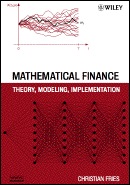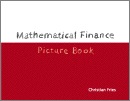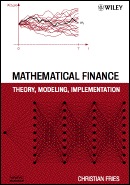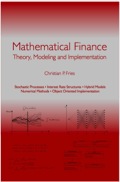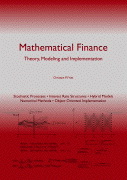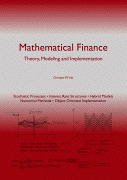Mathematics (English Text)
Monte-Carlo Methods on GPGPU with Applications to Mathematical Finance
19. 09 13 - 14:18 -
There will be a workshop on
Monte-Carlo Methods on GPGPU with Applications to Mathematical Finance
at the LMU quantLab. For details see http://www.fm.mathematik.uni-muenchen.de/news/gpu_workshop_news/index.html
LIBOR Market Model: Spreadsheet and Source Code
07. 03 13 - 19:28 -
Spreadsheet and code for the LIBOR market model added to finmath.net. Java source code availabe from the finmath lib subversion repository.
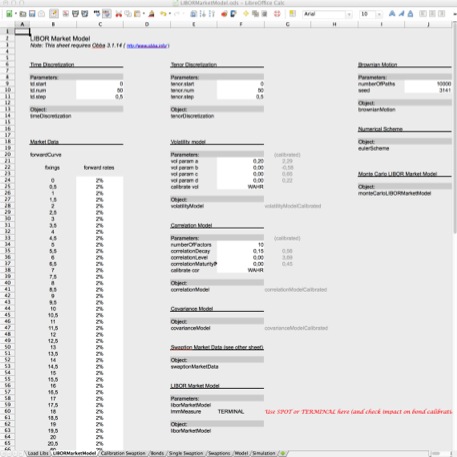
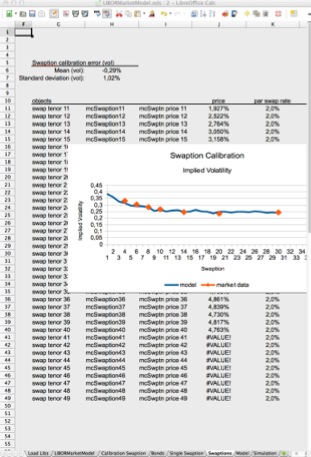
Curve Calibration: Spreadsheet and Source Code
31. 12 12 - 17:38 -
Demo spreadsheet for the calibration of curves (discount curves, forward curves) to interest rate swaps added to the spreadsheets section of finmath.net. Java source code availabe from the finmath lib subversion repository.
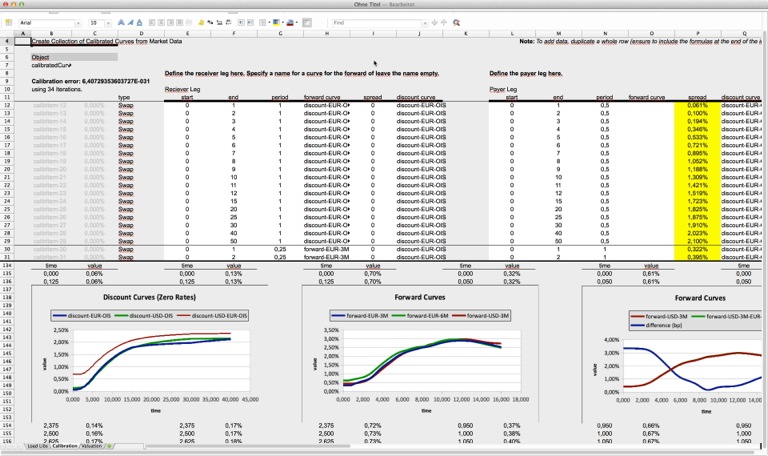
Computational Finance: Job Offer at LMU Department of Mathematics
07. 08 12 - 23:30 -
The
Ludwig-Maximilian-University Munich, Department of
Mathematics, is advertising a
Post Doctoral or Doctoral position
in the
field of financial and insurance mathematics
with special IT duties. The
position is commencing at the earliest convenience
for a term of 2 years with possible extension.
For details see http://www.christian-fries.de/lmu/joboffer2012
Conditional Analytic Monte-Carlo Pricing Scheme for Auto-Callables
27. 04 08 - 23:43 -
We renamed the paper cited in the Journal of
Computational Finance 11(3) as "A semi-analytic
Monte Carlo pricing scheme for auto-callable
products". Its new title is "Conditional Analytic Monte Carlo
Pricing Scheme for Auto-Callable
Products".
Book: Mathematical Finance: Second Printing
08. 04 08 - 15:56 -
Wiley released a second printing of my book.
The second printing is based on Version 1.6.11 of the
PDF file. It thus contains many of the error
corrections listed on the errata page. In addition, I
rewrote a few sections (25 pages changed), but
the difference to the old version is still
minor. Major improvements, like new sections
will be posted to the book's update page. (The version
number is printed on page v).
PS: I will donate a larger part of my 2007 net revenue to charity organizations (like the Fördergemeinschaft Deutsche Kinderherzzentren and Deutsche Krebshilfe (German Cancer Aid)). However: my net revenue is comparably small. From Wiley I get approximately $3 per book. BTW: Sorry for the price tag. I wasn't aware that the author does not have any influence on the pricing of his book.
PS: I will donate a larger part of my 2007 net revenue to charity organizations (like the Fördergemeinschaft Deutsche Kinderherzzentren and Deutsche Krebshilfe (German Cancer Aid)). However: my net revenue is comparably small. From Wiley I get approximately $3 per book. BTW: Sorry for the price tag. I wasn't aware that the author does not have any influence on the pricing of his book.
Sample Chapters
05. 02 08 - 20:52 -
Sample chapters for "Mathematical Finance" are
available as a free download from the book's homepage.
Joshi on LMM
21. 10 07 - 23:37 -
Mark Joshi is giving a seminar on "Implementing the
LIBOR Market Model". The seminar will take place in
London, 24th-25th January 2008. For more information
see the flyer. Literature: Mark's
books at amzon.co.uk, amzon.com, amazon.de.
Mathematical Finance: Picture Book
18. 08 07 - 23:01 -
The "Mathematical Finance Picture
Book" presents some aspects of mathematical
finance in pictures. It is a companion to
"Mathematical Finance: Theory, Modeling,
Implementation" (which contains these figures in
grayscale only).
The "Mathematical Finance Picture Book" is available as PDF.
The "Mathematical Finance Picture Book" is available as PDF.
Book: Mathematical Finance: Theory, Modeling, Implementation: Errata
18. 08 07 - 22:08 -
Version 1.5 of "Mathematical Finance" is
published by Wiley on August 24th. I will
maintain an errata online at www.christian-fries.de/finmath/book/errata.
Book: Mathematical Finance: Theory, Modeling, Implementation
31. 03 07 - 00:51 -
Version 1.5 of my book may be pre-ordered at
Amazon™:
Mathematical Finance Lecture Notes
21. 01 07 - 23:58 -
The translation of
my lecture notes on "mathematical finance" has been
completed. The manuscript still needs some
proofreading and polishing. If you would like to do a
payed proofreading job on the manuscript please
contract me via email (a native english speaker with
good knowledge of german and some knowledge of math
would be an ideal candidate).
I have released version 1.4 of the manuscript (in both german and english).
For a detailed table of contents see http://www.christian-fries.de/finmath/book.
I have released version 1.4 of the manuscript (in both german and english).
For a detailed table of contents see http://www.christian-fries.de/finmath/book.
Talk on Proxy Simulation Scheme Method
01. 10 06 - 20:16 -
I gave a talk at
the WBS 3rd Fixed Income Conference, Amsterdam, 21-22
September 2006 presenting the proxy simulation scheme
method. The talk covered the "full proxy" and the
"partial proxy" simulation scheme method. The first
part (full proxy) had been presented at the
Quantitative Methods in Finance Conference, Sydney,
2005. I have posted an updated version of the slides
at www.christian-fries.de/finmath/talks/2006proxyScheme
In addition I gave a 10 min talk at the "interest rate plenary panel". If you are interest in the "foresight bias correction" mentioned there, see www.christian-fries.de/finmath/foresightbias.
In addition I gave a 10 min talk at the "interest rate plenary panel". If you are interest in the "foresight bias correction" mentioned there, see www.christian-fries.de/finmath/foresightbias.
Partial Proxy Simulation Schemes for Robust Monte-Carlo Sensitivities
30. 09 06 - 23:33 -
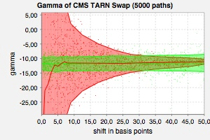
As a benchmark we apply the method to the pricing of digital caplets and target redemption notes using LIBOR and CMS indices under a LIBOR Market Model. We calculate stable deltas, gammas and vegas by applying direct finite difference to the proxy simulation scheme pricing.
The framework is generic in the sense that it is model and almost product independent. The only product dependent part is the specification of the proxy constraint. This allows for an elegant implementation, where new products may be included at small additional costs.
For more information see http://www.christian-fries.de/finmath/proxyscheme.
Mathematical Finance Lecture Notes
29. 09 06 - 22:18 -
Version 1.3.x of
the lecture notes on "mathematical finance" now
contains the missing chapter on Monte-Carlo
sensitivities. The calculation of Monte-Carlo
sensitivities (a.k.a. Greeks) was discussed in the
last two sessions of the 2005/2006 lecture. Apart
from two new chapters this version contains over 100
corrections.
For a detailed table of contents see http://www.christian-fries.de/finmath/book.
For a detailed table of contents see http://www.christian-fries.de/finmath/book.
Cross-Currency Markov Functional Model with FX Smile
15. 08 06 - 09:03 -
We have a
paper on the cross-currency Markov
functional model where the FX functional allow a
calibration to a given market implied volatility
smile. Calibration works for twenty years and
beyond. More details may be found in the Diploma
thesis of Fabian Eckstädt.
One Day Lecture at s:f:i
23. 07 06 - 23:47 -

The lecture will take place August 2nd at University of Lausanne. See the program of this event for details. As precourse reading you should consider Chapter 8, 9 and 10 (interest rate basics), Chapter 12 (exotic derivatives) and Chapter 15 (libor market model) of my lecture notes. These chapters are available in english and german.
Foresight Bias
14. 07 06 - 22:45 -

Mathematical Finance Lecture Notes
12. 05 06 - 12:53 -
A first draft of
the english version of "Mathematical Finance"
is available on my home
page.
Chapters which are not yet translated will be
given in German. I will add more translations
depending on my spare time.
The book arose from my lecture notes for the lectures on mathematical finance held at University of Mainz and University of Frankfurt. It tries to give a balanced representation of the theoretic foundations, state of the art models, which are actually used in practice and their implementation.
For more information see http://www.christian-fries.de/finmath/book.
The book arose from my lecture notes for the lectures on mathematical finance held at University of Mainz and University of Frankfurt. It tries to give a balanced representation of the theoretic foundations, state of the art models, which are actually used in practice and their implementation.
For more information see http://www.christian-fries.de/finmath/book.
Equity Markov Functional Model
02. 04 06 - 10:24 -

Version 0.4 of the paper is still lacking an introduction.
(Edit 14.04.06): In Version 0.8 I have added a nice discussion on model dynamics, using Black-Scholes like functionals as a starting point for my examples. The discussion shows how to calibrate the joint asset-interest rate dynamics (ie. r(S)) and forward volatility (all this in addition to the calibration to a full two dimensional smile surface.
Smile Modeling in the LIBOR Market Model
24. 02 06 - 00:10 -
I have put online the Diploma thesis of Markus
Meister "Smile Modeling in the LIBOR Market Model".
See http://www.christian-fries.de/finmath.
